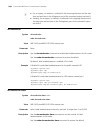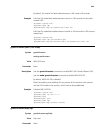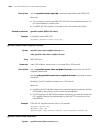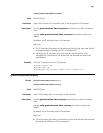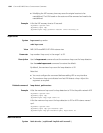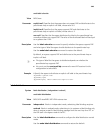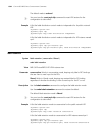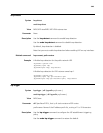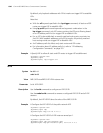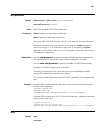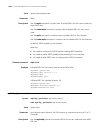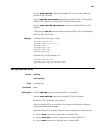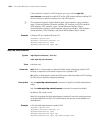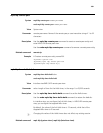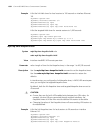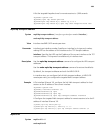
1546 CHAPTER 95: MPLS BASICS CONFIGURATION COMMANDS
By default, only loopback addresses with 32-bit masks can trigger LDP to establish
LSPs.
Note that:
■ With the all keyword specified in the lsp-trigger command, all static and IGP
routes can trigger LDP to establish LSPs.
■ Using ip-prefix prefix-name keyword and argument combination in the
lsp-trigger command, only IGP routes surviving the IGP route filtering based
on an IP address prefix list can trigger LDP to establish LSPs.
■ For an LSP to be established, an exactly matched routing entry must exist on
the LSR. With loopback addresses using 32-bit masks, only exactly matched
host routing entries can trigger LDP to establish LSPs.
■ An IP address prefix list affects only static routes and IGP routes.
■ For information about IP address prefix list, refer to “IP Addressing
Configuration Commands” on page 781.
Example # Specify LDP to allow all static and IGP routes to trigger LSP establishment.
<Sysname> system-view
[Sysname] mpls
[Sysname-mpls] lsp-trigger all
lsr-id
Syntax lsr-id lsr-id
undo lsr-id
View MPLS LDP view/MPLS LDP VPN instance view
Parameter lsr-id: LDP LSR ID.
Description Use the
lsr-id command to configure an LDP LSR ID.
Use the
undo lsr-id command to remove a configured LDP LSR ID and all LDP
sessions.
By default, the LDP LSR ID takes the value of the MPLS LSR ID.
Example # Configure the LDP LSR ID of the public network LDP.
<Sysname> system-view
[Sysname] mpls ldp
[Sysname-mpls-ldp] lsr-id 2.2.2.3
# Configure the LDP LSR ID of LDP instance named vpn1.
<Sysname> system-view
[Sysname] mpls ldp vpn-instance vpn1
[Sysname-mpls-ldp-vpn-instance-vpn1] lsr-id 4.2.2.3



